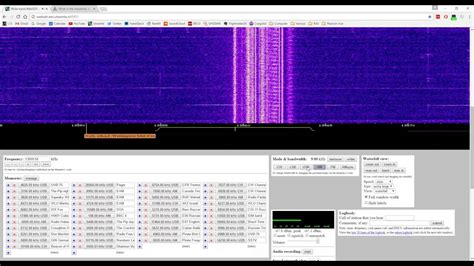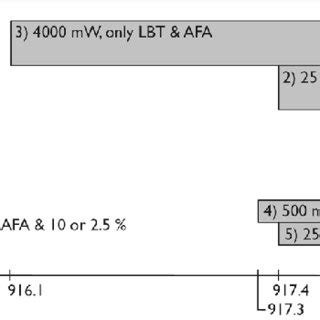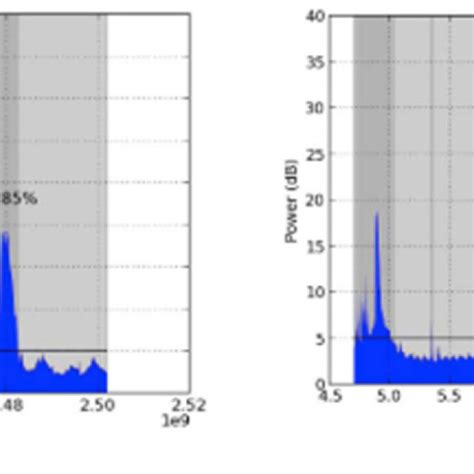What are the ISM Bands?
The ISM bands are radio bands (portions of the radio spectrum) that are reserved internationally for the use of radio frequency (RF) energy for industrial, scientific and medical purposes (ISM), other than telecommunications.
Despite the intent of the original allocations, in recent years the fastest-growing uses of these bands have been for short-range, low power communications systems. Cordless phones, Bluetooth devices, near field communication (NFC) devices, and wireless computer networks all use frequencies allocated to low power communications devices in the ISM bands.
Frequencies and Applications
The ISM bands are defined by the ITU Radio Regulations. The table below shows the main ISM frequency bands and some of their typical applications:
| Frequency Range | Bandwidth | Center Frequency | Availability | Applications |
|---|---|---|---|---|
| 6.765 MHz – 6.795 MHz | 30 kHz | 6.780 MHz | Subject to local acceptance | RFID, induction heating |
| 13.553 MHz – 13.567 MHz | 14 kHz | 13.560 MHz | Worldwide | RFID, power line communication, induction heating |
| 26.957 MHz – 27.283 MHz | 326 kHz | 27.120 MHz | Worldwide | CB radio, remote control, model control |
| 40.66 MHz – 40.70 MHz | 40 kHz | 40.68 MHz | Worldwide | RFID, induction heating |
| 433.05 MHz – 434.79 MHz | 1.74 MHz | 433.92 MHz | Region 1 only | Amateur radio, remote control, IoT, telemetry, medical devices |
| 902.00 MHz – 928.00 MHz | 26 MHz | 915.00 MHz | Region 2 only | RFID, cordless phones, ZigBee, IoT, telemetry, medical devices |
| 2.400 GHz – 2.500 GHz | 100 MHz | 2.450 GHz | Worldwide | Wi-Fi, Bluetooth, microwave ovens, ZigBee, IoT |
| 5.725 GHz – 5.875 GHz | 150 MHz | 5.800 GHz | Worldwide | Wi-Fi, cordless phones, radar |
| 24.00 GHz – 24.25 GHz | 250 MHz | 24.125 GHz | Worldwide | Automotive radar, radio astronomy |
| 61.00 GHz – 61.50 GHz | 500 MHz | 61.25 GHz | Subject to local acceptance | Unlicensed short range data links |
| 122.00 GHz – 123.00 GHz | 1 GHz | 122.50 GHz | Subject to local acceptance | Unlicensed short range data links |
| 244.00 GHz – 246.00 GHz | 2 GHz | 245.00 GHz | Subject to local acceptance | Unlicensed short range data links |
ISM Bands by Region
The ISM bands vary slightly in different parts of the world. Here’s a breakdown of the main ISM bands by ITU region:
Region 1 (Europe, Middle East, Africa, Russia)
- 433.05 MHz – 434.79 MHz
- 863.00 MHz – 870.00 MHz
- 2.400 GHz – 2.500 GHz
- 5.725 GHz – 5.875 GHz
- 24.00 GHz – 24.25 GHz
- 61.00 GHz – 61.50 GHz
- 122.00 GHz – 123.00 GHz
- 244.00 GHz – 246.00 GHz
Region 2 (Americas)
- 902.00 MHz – 928.00 MHz
- 2.400 GHz – 2.500 GHz
- 5.725 GHz – 5.875 GHz
- 24.00 GHz – 24.25 GHz
- 61.00 GHz – 61.50 GHz
- 122.00 GHz – 123.00 GHz
- 244.00 GHz – 246.00 GHz
Region 3 (Asia, Oceania)
- 433.05 MHz – 434.79 MHz
- 2.400 GHz – 2.500 GHz
- 5.725 GHz – 5.875 GHz
- 24.00 GHz – 24.25 GHz
- 61.00 GHz – 61.50 GHz
- 122.00 GHz – 123.00 GHz
- 244.00 GHz – 246.00 GHz

Regulations and Power Limits
Devices using the ISM bands must comply with certain technical requirements, including power limits, to avoid causing interference to other devices. The exact requirements vary by country and region.
FCC Regulations in the United States
In the United States, the Federal Communications Commission (FCC) regulates the use of the ISM bands under Part 15 and Part 18 of its rules.
Part 15 covers “Unlicensed RF Devices” and includes rules for low-power, non-licensed transmitters that operate in the ISM bands. These devices must accept interference from other devices and must not cause harmful interference. The FCC specifies maximum transmission power and emission limits to minimize the potential for interference.
Part 18 covers “Industrial, Scientific, and Medical Equipment” and includes rules for equipment that uses RF energy for purposes other than communications, such as microwave ovens, RF lighting, and industrial heaters. This equipment must also comply with emission limits to avoid causing harmful interference.
European Regulations
In Europe, the European Telecommunications Standards Institute (ETSI) and the European Conference of Postal and Telecommunications Administrations (CEPT) are responsible for regulating the use of the ISM bands.
The ETSI has developed several standards that specify requirements for devices operating in the ISM bands, including:
- EN 300 220 for short range devices operating below 1 GHz
- EN 300 328 for wideband transmission systems operating in the 2.4 GHz ISM band
- EN 300 440 for short range devices operating above 1 GHz
These standards specify technical requirements such as frequency ranges, power limits, duty cycles, and spectrum access techniques to ensure efficient use of the spectrum and to minimize the potential for interference.

ISM Band Applications
The ISM bands are used for a wide variety of applications, including:
Wi-Fi
Wi-Fi is a family of wireless network protocols, based on the IEEE 802.11 family of standards, which uses ISM bands to provide wireless connectivity for devices such as computers, smartphones, and IoT devices. The most commonly used Wi-Fi bands are:
- 2.4 GHz (channels 1-14)
- 5 GHz (channels 36-165)
Wi-Fi devices must share these bands with other devices and are subject to power limits and other technical requirements to minimize interference.
Bluetooth
Bluetooth is a short-range wireless communication technology that uses the 2.4 GHz ISM band. It is used for connecting devices such as headphones, speakers, keyboards, and other peripherals to computers and mobile devices.
Bluetooth devices use a frequency hopping spread spectrum (FHSS) technique to minimize interference with other devices operating in the same band. The Bluetooth specification defines 79 channels in the 2.4 GHz band, each 1 MHz wide, and devices hop among these channels up to 1,600 times per second.
ZigBee
ZigBee is a low-power, low data rate wireless network protocol used for home automation, medical device data collection, and other applications where long battery life and small data packets are required. It operates in the 2.4 GHz, 915 MHz, and 868 MHz ISM bands.
ZigBee is based on the IEEE 802.15.4 standard and supports mesh networking, which allows ZigBee devices to relay data through intermediary devices to extend the network’s range.
RFID
Radio-frequency identification (RFID) uses electromagnetic fields to automatically identify and track tags attached to objects. RFID systems can use several of the ISM bands, including:
- Low frequency (LF) at 125-134 kHz
- High frequency (HF) at 13.56 MHz
- Ultra-high frequency (UHF) at 433 MHz and 860-960 MHz
- Microwave at 2.45 GHz and 5.8 GHz
RFID tags can be passive (powered by the RFID reader’s electromagnetic field) or active (battery-powered), and they can be read-only or read-write.
Microwave Ovens
Microwave ovens use the 2.4 GHz ISM band to heat food. They work by generating high-power microwaves that cause water, fat, and sugar molecules in the food to vibrate, producing heat.
Microwave ovens must be designed to contain the microwaves within the oven cavity and to minimize leakage that could interfere with other devices operating in the same band.

Interference and Coexistence
Because the ISM bands are shared by many different types of devices and applications, interference and coexistence can be significant challenges.
Types of Interference
Interference can occur when two or more devices transmit on the same frequency at the same time. There are two main types of interference:
-
Co-channel interference: This occurs when two devices transmit on the same frequency channel. It can be mitigated by using different channels or by coordinating transmissions to avoid overlap.
-
Adjacent channel interference: This occurs when a device transmits on a frequency channel that is adjacent to the channel used by another device. It can be mitigated by leaving guard bands between channels and by using filters to suppress out-of-band emissions.
Coexistence Techniques
To enable different types of devices to coexist in the ISM bands, several techniques can be used:
-
Frequency hopping: Devices rapidly switch among different frequency channels to avoid interfering with each other. This is used by Bluetooth and some cordless phone systems.
-
Listen before talk (LBT): Devices listen for other transmissions before transmitting to avoid collisions. This is used by Wi-Fi and some other systems.
-
Dynamic frequency selection (DFS): Devices monitor the spectrum for radar signals and other interference and dynamically select the best available channel. This is used by some 5 GHz Wi-Fi systems.
-
Transmit power control (TPC): Devices adjust their transmit power based on the distance to the receiver to minimize interference to other devices. This is used by some Wi-Fi and ZigBee systems.
Future Developments
As the demand for wireless connectivity continues to grow, the use of the ISM bands is likely to intensify. This will require the development of new technologies and techniques to enable more efficient use of the spectrum and to minimize interference.
Some potential future developments include:
-
Cognitive radio: This is a type of radio that can intelligently detect and use available spectrum, adapting its transmission parameters to avoid interference with other users. Cognitive radio could enable more dynamic and efficient sharing of the ISM bands.
-
60 GHz Wi-Fi: The 60 GHz ISM band offers much more bandwidth than the 2.4 GHz and 5 GHz bands currently used by Wi-Fi. However, 60 GHz signals have very short range and are easily blocked by walls and other obstacles. New technologies such as beamforming and mesh networking could enable the use of 60 GHz for high-bandwidth, short-range applications.
-
Low-power wide-area networks (LPWANs): These are wireless networks designed for IoT applications that require long range, low data rates, and long battery life. LPWANs such as LoRa and Sigfox use sub-GHz ISM bands to provide coverage for large areas with minimal infrastructure. The development of new LPWAN technologies and standards could enable new IoT applications in areas such as smart cities, agriculture, and environmental monitoring.
Frequently Asked Questions
What does ISM stand for?
ISM stands for Industrial, Scientific and Medical. The ISM radio bands are portions of the radio spectrum that are reserved internationally for the use of radio frequency (RF) energy for industrial, scientific and medical purposes other than telecommunications.
What are the most commonly used ISM bands?
The most commonly used ISM bands are:
– 433 MHz (Europe)
– 915 MHz (North America)
– 2.4 GHz (worldwide)
– 5.8 GHz (worldwide)
What types of devices use the ISM bands?
Many types of devices use the ISM bands, including:
– Wi-Fi routers and devices
– Bluetooth devices
– ZigBee devices
– RFID systems
– Cordless phones
– Microwave ovens
– Industrial heaters and welders
– Medical devices
Do I need a license to use the ISM bands?
In most cases, you do not need a license to use the ISM bands as long as your device complies with the technical rules for the band, such as power limits and duty cycle requirements. However, some countries may require a license or registration for certain types of devices or applications.
Can I use the ISM bands for any purpose?
While the ISM bands are designated for industrial, scientific, and medical purposes, in practice they are also widely used for short-range, low-power wireless communications. However, devices using the ISM bands must be designed to tolerate interference from other devices and must not cause harmful interference to other users of the band.

Leave a Reply